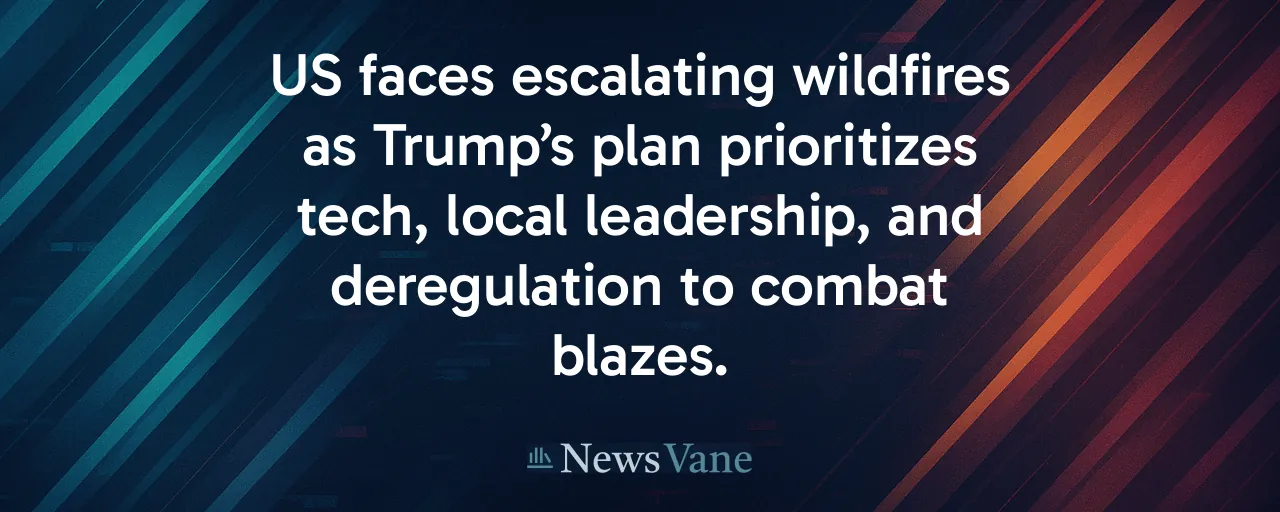A Nation on Fire
Wildfires now define summers across the United States, with flames devouring homes, forests, and futures at an alarming rate. On June 12, 2025, President Donald Trump signed an executive order to confront this crisis head-on. The plan hinges on empowering local leaders, embracing cutting-edge technology, and slashing federal regulations to fight fires more effectively.
The order comes in the wake of catastrophic blazes, like the January 2025 Los Angeles fires that left thousands homeless. It promises to streamline federal efforts, harness tools like artificial intelligence for early detection, and give states more control over prevention and response. For communities battered by smoke and loss, the plan offers a glimmer of hope, but its success remains uncertain amid a warming climate and decades of tangled forest policies.
This effort reflects a broader question: how do we coexist with fire in an era of escalating disasters? The executive order aims to act swiftly, yet it contends with competing priorities, from ecological health to economic realities, all while the flames grow fiercer.
Inside the Plan
The executive order merges federal wildfire programs under the Departments of the Interior and Agriculture to cut bureaucratic delays. It promotes advanced tools, including AI-driven fire prediction, satellite data, and weather models, to help states detect and respond to fires faster. The plan also prioritizes selling surplus military aircraft to bolster firefighting fleets, a practical move for cash-strapped regions.
Prevention takes center stage, with relaxed rules to expand prescribed burns and thin overgrown forests. The order encourages turning excess vegetation into energy or products, aiming to reduce fire fuels while creating economic benefits. Declassifying historical satellite data will refine predictive models, though some experts question how privacy and data security will be handled.
State and local officials, long frustrated by federal hurdles, welcome the added flexibility. Yet, environmental researchers caution that easing regulations could lead to overzealous logging or burns that harm ecosystems, especially if oversight weakens. The plan's focus on immediate action calls for balance with long-term ecological stability.
Climate's Role in the Blaze
Wildfires are inseparable from climate change. Warmer temperatures, prolonged droughts, and shifting wind patterns have increased by an estimated 39% the area burned in the western United States since the 1980s. The 2025 Los Angeles fires, driven by bone-dry conditions and fierce Santa Ana winds, highlight how warming fuels extreme fire behavior. Studies estimate climate change has made such fire weather up to 60% of wildfire-generated PM2.5 in parts of the West.
While the executive order emphasizes rapid response and fuel reduction, it sidesteps broader climate strategies like emissions cuts. Those advocating for comprehensive climate action argue that without addressing warming's root causes, even the best firefighting tools may struggle to keep pace. Others maintain that practical steps, like clearing fuels and upgrading technology, offer the most immediate path to saving lives and property.
Who Leads the Fight?
The plan's push for state-led wildfire management assumes local leaders can act faster and smarter than distant federal agencies. States like California have built sophisticated early-warning systems, but major fires often demand federal resources. The executive order seeks to clarify this partnership, giving states more autonomy while expecting them to shoulder greater responsibility.
This shift divides opinion. Some state officials praise the freedom to tailor strategies to their unique landscapes. Others, especially in financially strained regions, fear that reduced federal support could leave them scrambling during massive fires. A separate bipartisan proposal, the 2025 FEMA Act, advocates for stronger federal coordination and pre-disaster funding, revealing a tension between local control and centralized aid.
Forest Management's Thorny Choices
Reducing forest fuels is critical to taming wildfires, but the methods spark fierce debate. Prescribed burns can lower fire intensity, but smoke and weather constraints limit their use. Thinning creates defensible spaces, yet projects sometimes remove mature, fire-resistant trees, raising ecological concerns. Indigenous cultural burning, increasingly embraced, offers a sustainable model but requires expertise and community trust.
The executive order's emphasis on timber harvesting and biomass use aims to fund fuel reduction while boosting rural economies. Environmental advocates warn that commercial logging, if poorly managed, could fragment habitats or increase fire risks by leaving debris. These trade-offs highlight the challenge of aligning economic incentives with scientific precision in a rapidly warming world.
The Road Forward
President Trump's wildfire strategy is a bold bet on technology, deregulation, and local leadership. Its promise of faster, smarter firefighting resonates with communities desperate for relief. Yet, its reliance on state resources and relaxed oversight raises questions about equity and environmental impact, particularly as climate-driven fires grow more relentless.
Success will depend on collaboration among scientists, state officials, and local communities to refine tools and strategies. The executive order sets a new course, but its true test lies in whether it can adapt to the unpredictable realities of a fire-prone future, protecting both people and the landscapes they call home.
For now, the plan stands as a call to action in a nation scarred by flames. It's a reminder that wildfires demand response, foresight, balance, and a willingness to confront the forces driving them.
